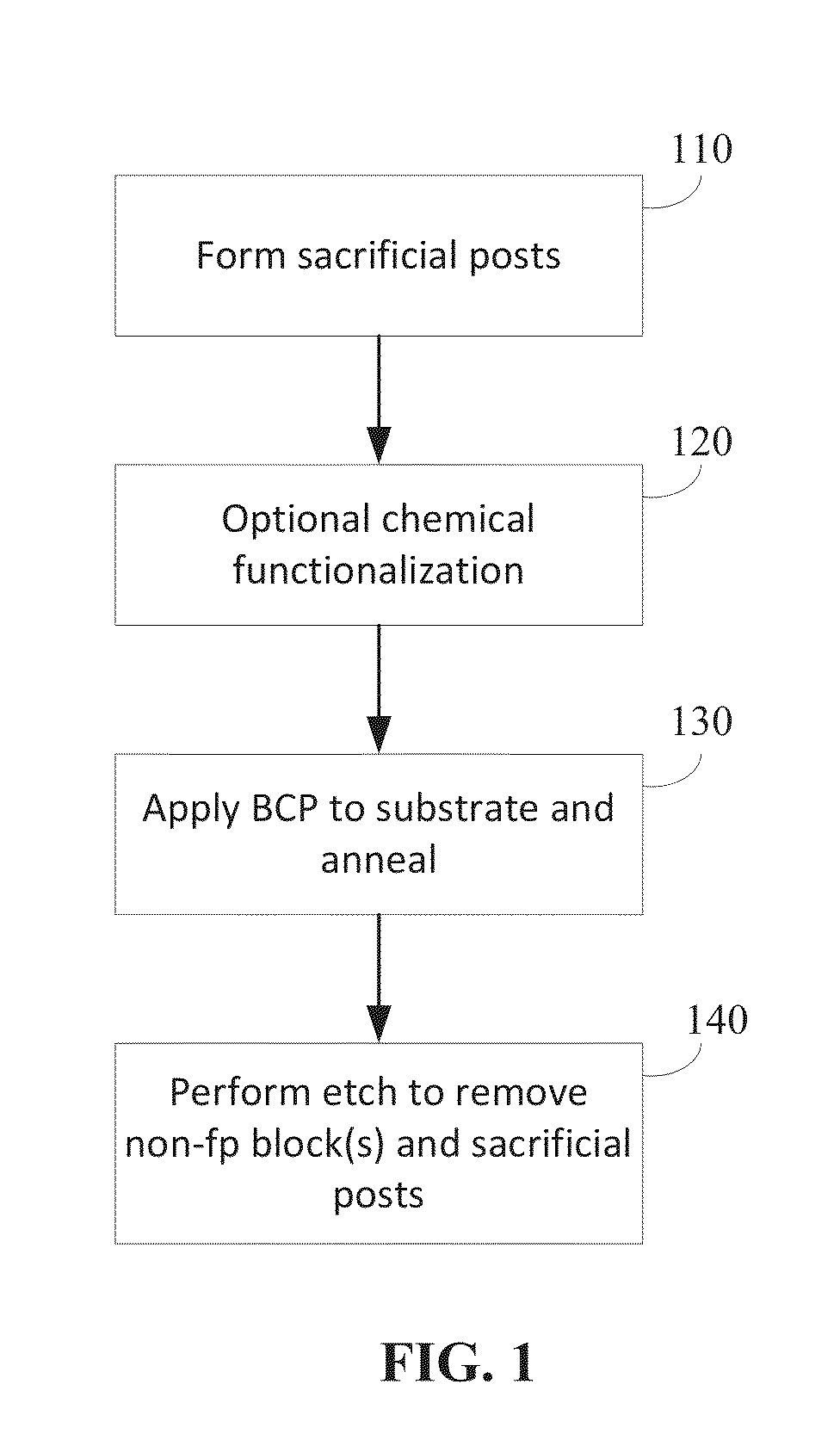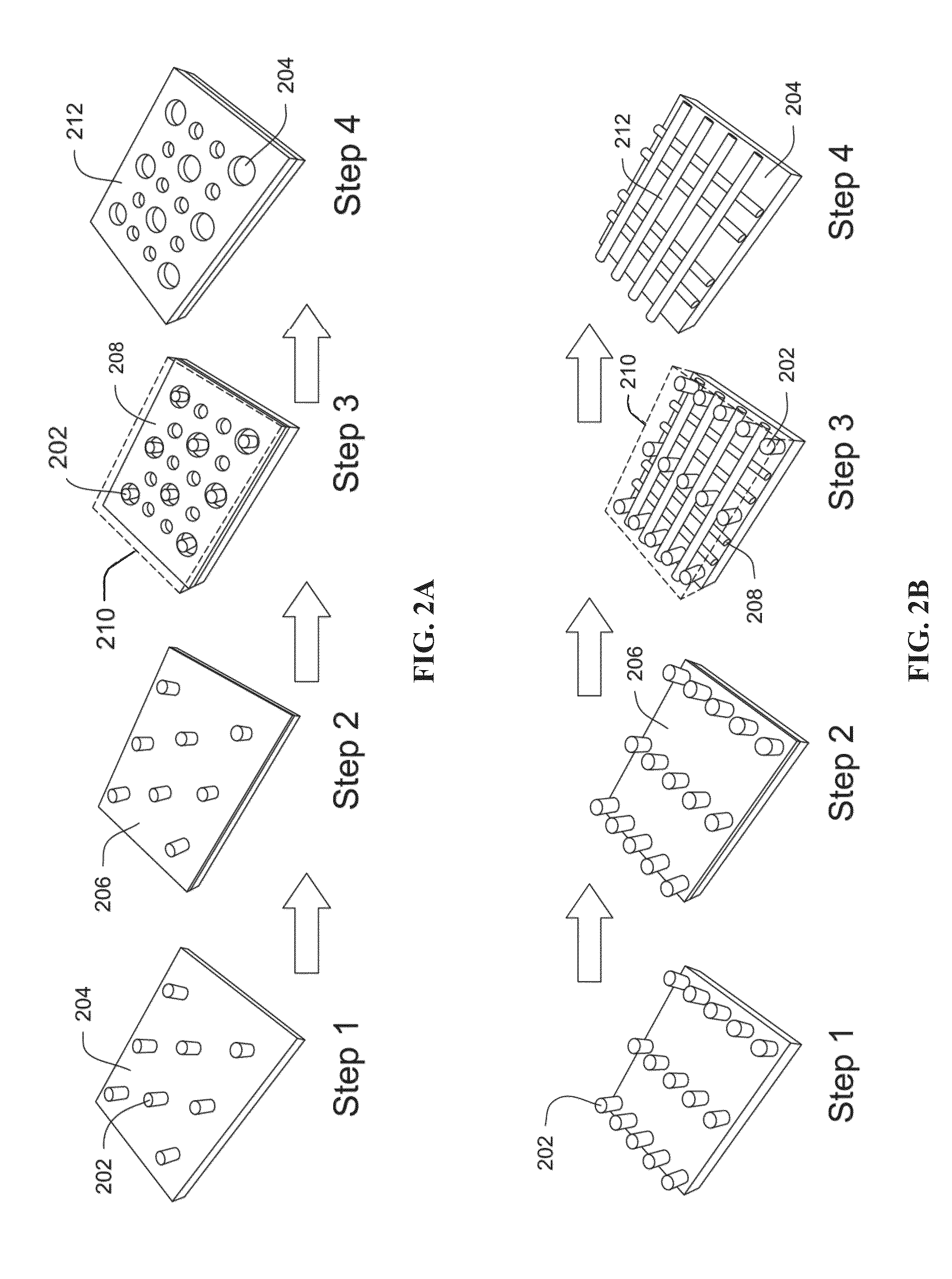Removable templates for directed self assembly
a self-assembly and template technology, applied in the direction of instruments, photomechanical treatment, electrical equipment, etc., can solve the problems of limited techniques and low throughpu
- Summary
- Abstract
- Description
- Claims
- Application Information
AI Technical Summary
Benefits of technology
Problems solved by technology
Method used
Image
Examples
example
Mesh Forming Cylinders
[0069]To illustrate the feasibility of 3-D structures (including the bilayer morphology shown in FIG. 2B), a templating process using HSQ was carried out and the results illustrated in the SEM images of an etched 3D-structure on a substrate found in FIGS. 6A-6D. It should be understood that this process can be carried out using sacrificial posts as well and additional examples are provided and described with respect to FIGS. 16A and 16B.
[0070]In particular, HSQ was spin coated at 40±2 nm thickness on Si (100) substrates. The post array templates were fabricated by means of electron-beam lithography of the HSQ resist at an acceleration voltage of 30 kV, beam current of 300 pA, and dot doses of 40 to 116 fC. After development and HSQ hardening by use of an oxygen plasma asher, the final post height was 33±2 nm. Next, the substrates and posts were chemically functionalized with hydroxyl terminated polystyrene (1 kg mol−1, 2 nm thick), which corresponds to the majo...
examples
Materials and Methods
Template Fabrication
[0092]Initial sacrificial post templates were fabricated using electron beam lithography (EBL) of 40 nm thick films of PMMA as a negative-tone resist as described with respect to FIGS. 2A and 2B (Step 1).
[0093]For the fabricated samples, prime silicon (100) wafers were cut into pieces ˜2 cm×2 cm and diluted PMMA was spin-coated onto the pieces. The PMMA (950 kg / mol in anisole) was diluted with a volumetric dilution ratio of about 1:8 PMMA:anisole. To produce 40 nm thickness films (measured by ellipsometer), a 4000 rpm spin coating speed was used. To evaporate the excess solvent and improve the adhesion between the PMMA resist and the substrate, the samples were baked on a hot plate at 200° C. for 2 min.
[0094]PMMA is typically a positive-tone resist; however PMMA can act as a negative-tone resist when exposed to doses of about 30 times the positive-tone dose and developed with methyl isobutyl ketone (MIBK) as part of a carbonization process. W...
PUM
| Property | Measurement | Unit |
|---|---|---|
| thickness | aaaaa | aaaaa |
| height | aaaaa | aaaaa |
| thick | aaaaa | aaaaa |
Abstract
Description
Claims
Application Information
 Login to View More
Login to View More - R&D
- Intellectual Property
- Life Sciences
- Materials
- Tech Scout
- Unparalleled Data Quality
- Higher Quality Content
- 60% Fewer Hallucinations
Browse by: Latest US Patents, China's latest patents, Technical Efficacy Thesaurus, Application Domain, Technology Topic, Popular Technical Reports.
© 2025 PatSnap. All rights reserved.Legal|Privacy policy|Modern Slavery Act Transparency Statement|Sitemap|About US| Contact US: help@patsnap.com



